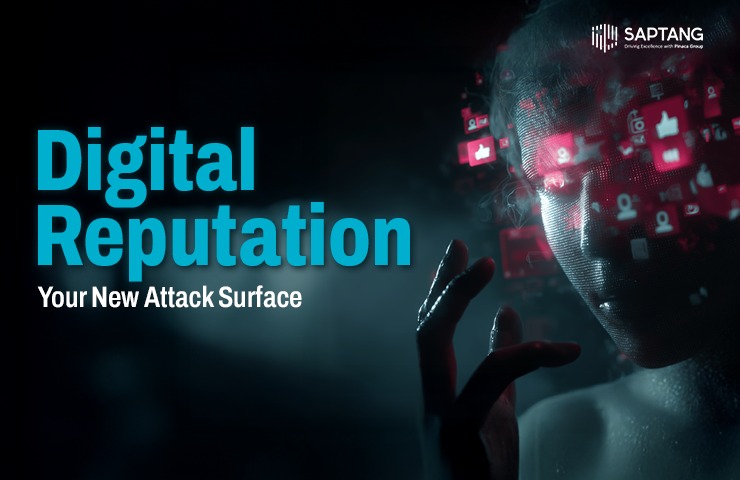
In today’s digital landscape, your reputation is more than just perception—it’s a direct vulnerability. From fake websites to AI-generated impersonations, cyber attackers are exploiting public trust to gain access, cause damage, or manipulate audiences. This article explains why digital reputation has become a real attack surface, and what leaders from CISOs to founders can do about it.
Your digital reputation is the sum total of what people see, read, and believe about you or your organization online. This includes:
If someone can control or corrupt these perceptions, they can:
Traditional security focuses on infrastructure: networks, endpoints, apps.
But modern attackers don’t always need to breach your servers they can breach your public image.
Example scenarios:
| Tactic | Real-World Result |
| Fake website mimicking your brand | Users unknowingly share credentials |
| AI-generated deepfake of your CEO | Misinformation, financial scams |
| Coordinated fake reviews | Search engine manipulation, trust erosion |
| Spoofed emails using lookalike domains | Successful phishing attacks |
In all these cases, your reputation is the bait and it’s often not being monitored by your security stack.
Take this story: A cybersecurity startup discovered a clone of their website with a .net domain. It had their logos, colors, and even copied LinkedIn bios of their leadership. The fake site:
No firewall caught this—because the breach happened in public view.
Cybersecurity isn’t just about technical access anymore. It’s also about influence, perception, and credibility.
Attackers understand three key realities:
Security leaders should treat the following as critical external surfaces:
You might secure your endpoints, but if a customer searches your brand and finds misinformation, the damage is done.
Digital security now requires narrative control, trust preservation, and reputation protection.
CISOs and marketing teams must collaborate like never before.
Your next breach might not happen in your server room.
It could start with a fake blog post, a chatbot summary, or a tweet that wasn’t yours.
| Action | Tool |
| Monitor brand mentions across web & AI | BrandGuard 360, Google Alerts, AI audits |
| Register lookalike domains | Domain registrars |
| Track AI chatbot answers | Ask ChatGPT, Bing, Perplexity manually |
| Create rapid takedown process | Legal + comms alignment |
| Publish “official voice” statements | Website, social, press kits |
You may also like this: Zero-Day Exploits Are Rising: Here’s What Every Enterprise Needs to Prepare For